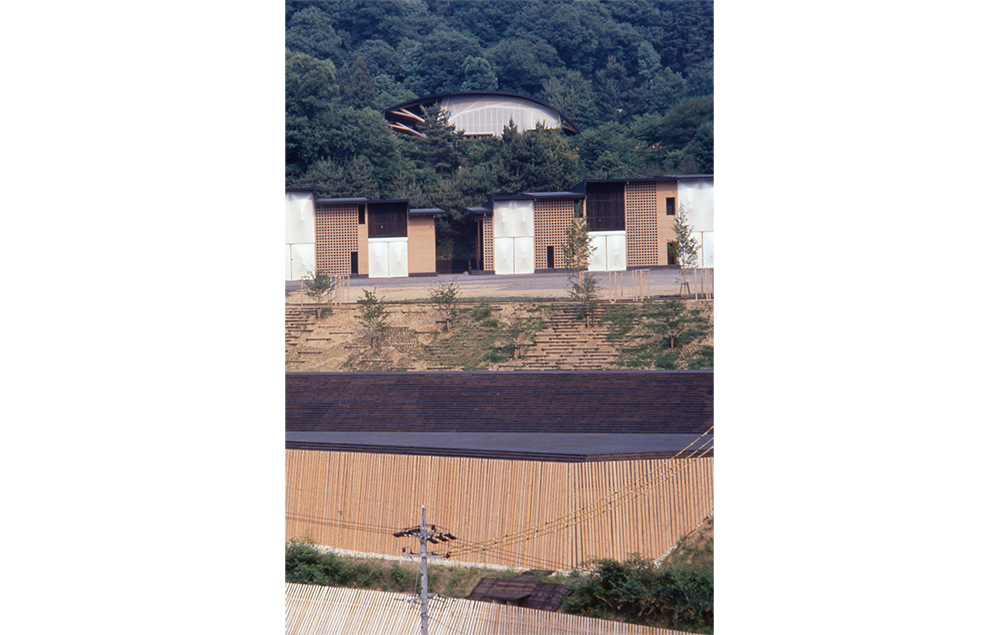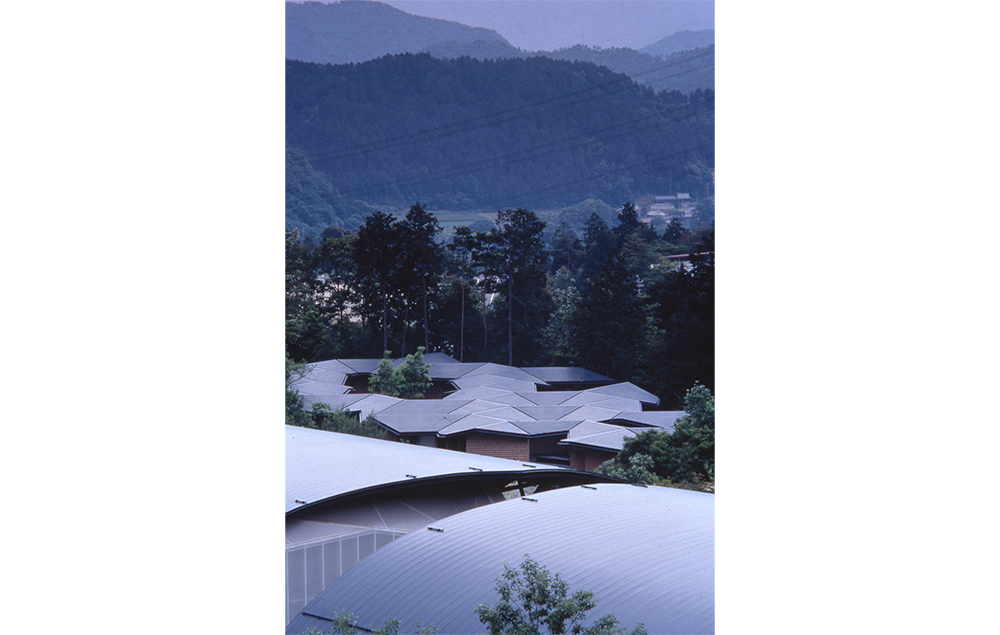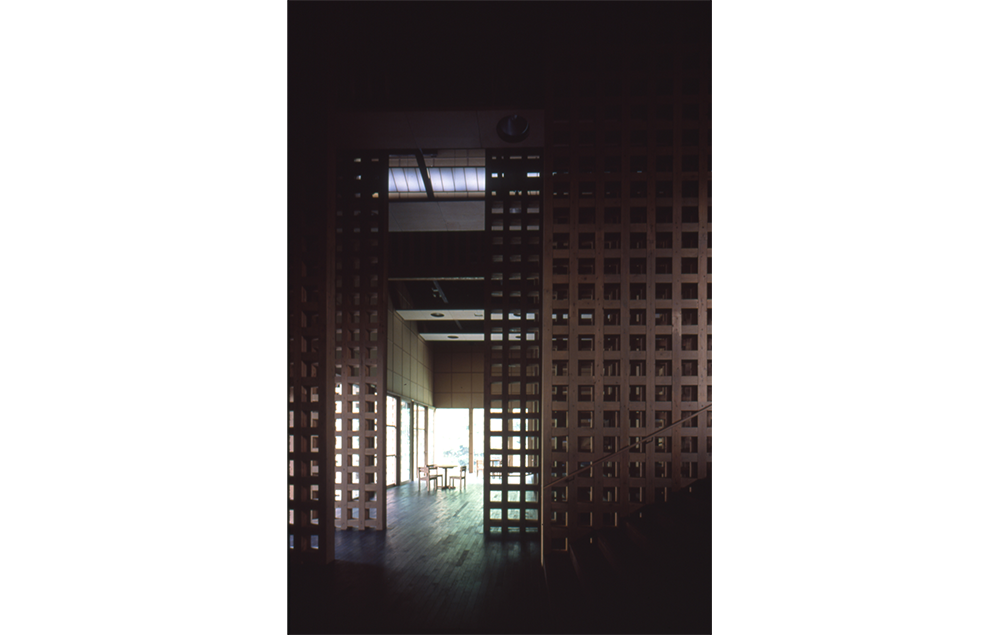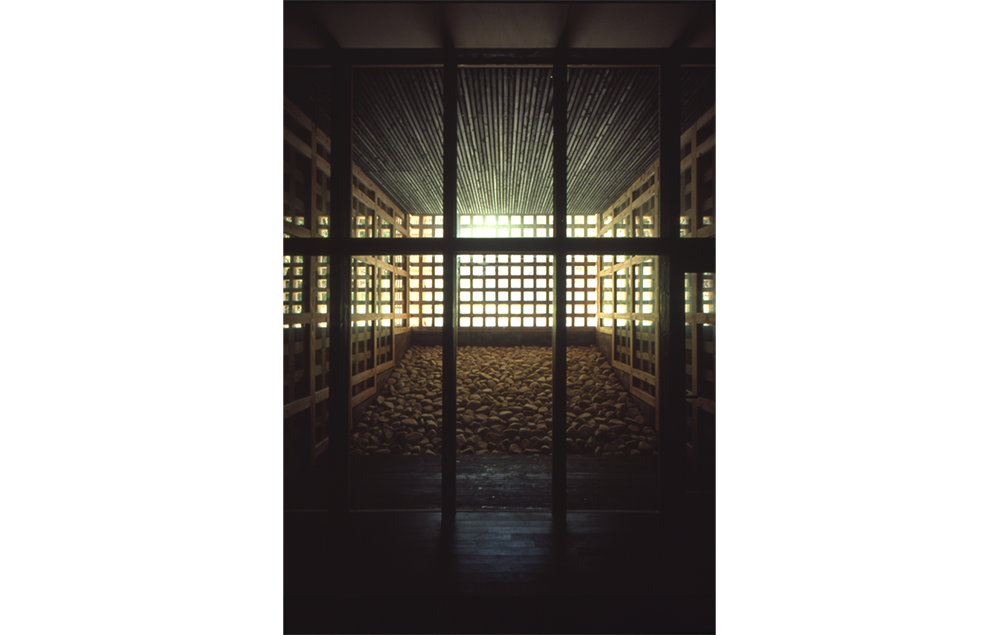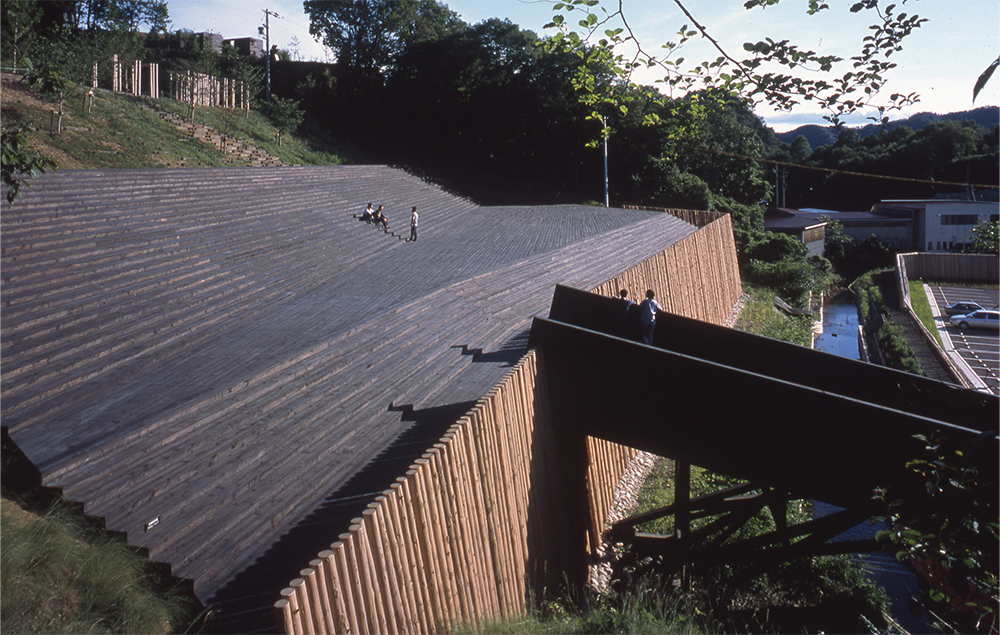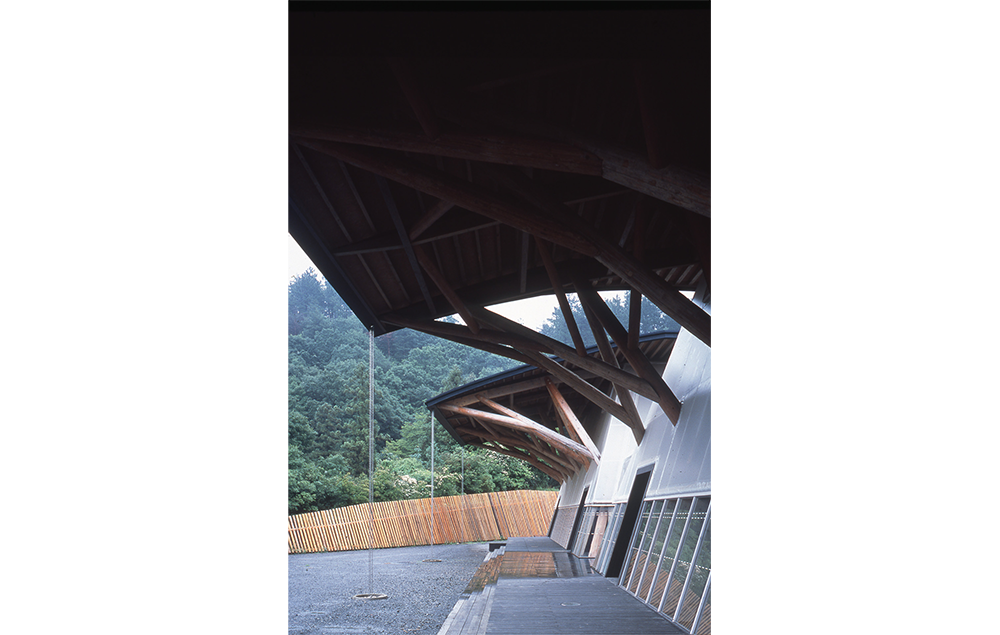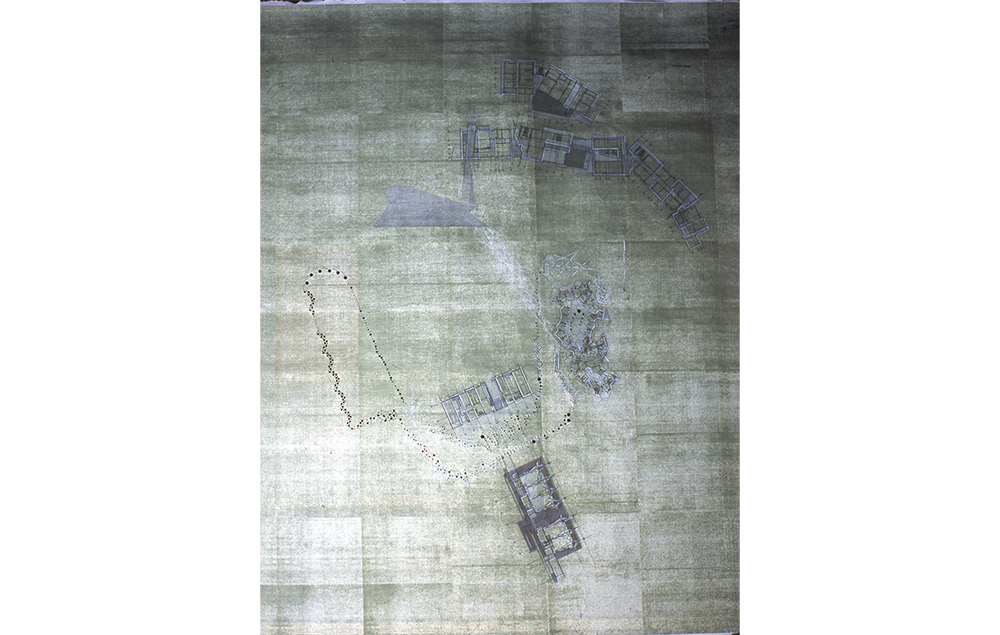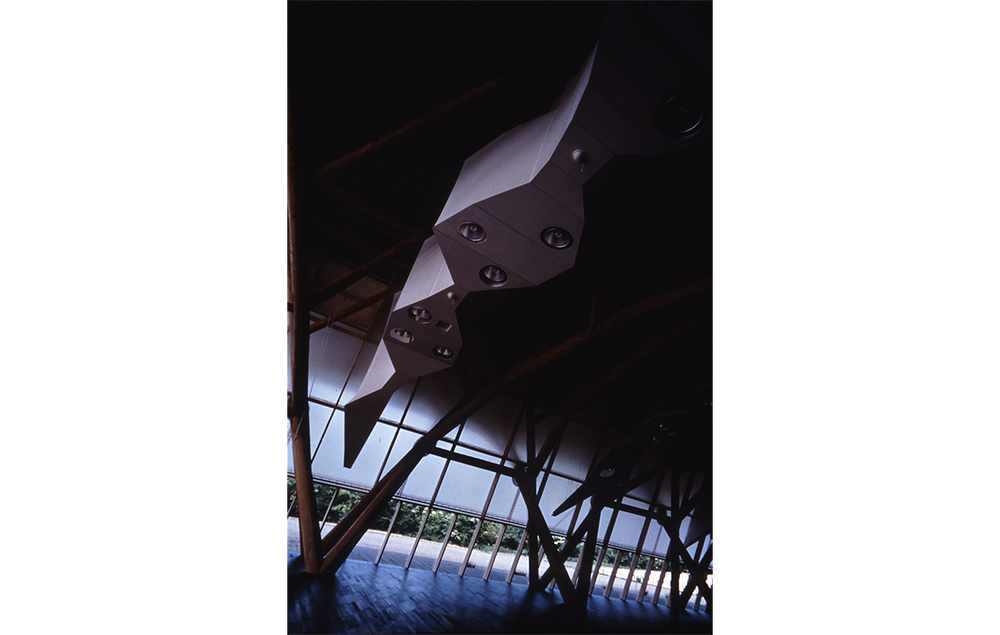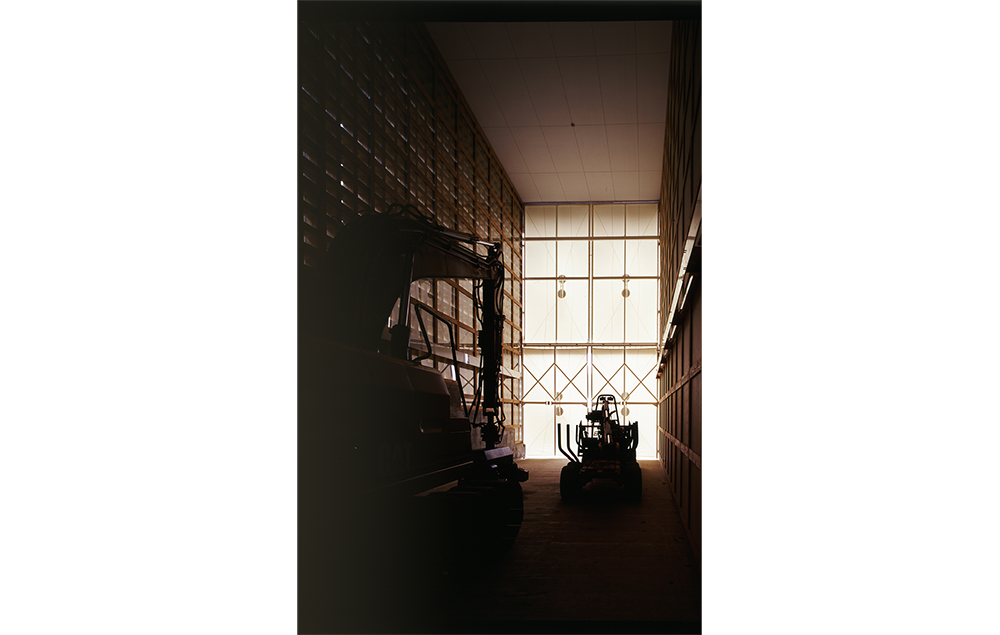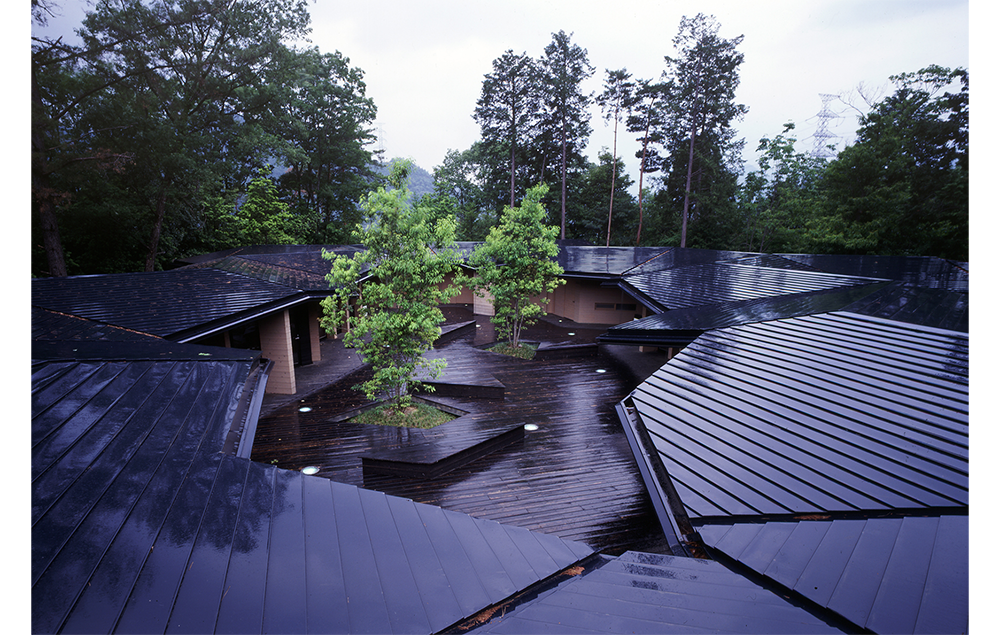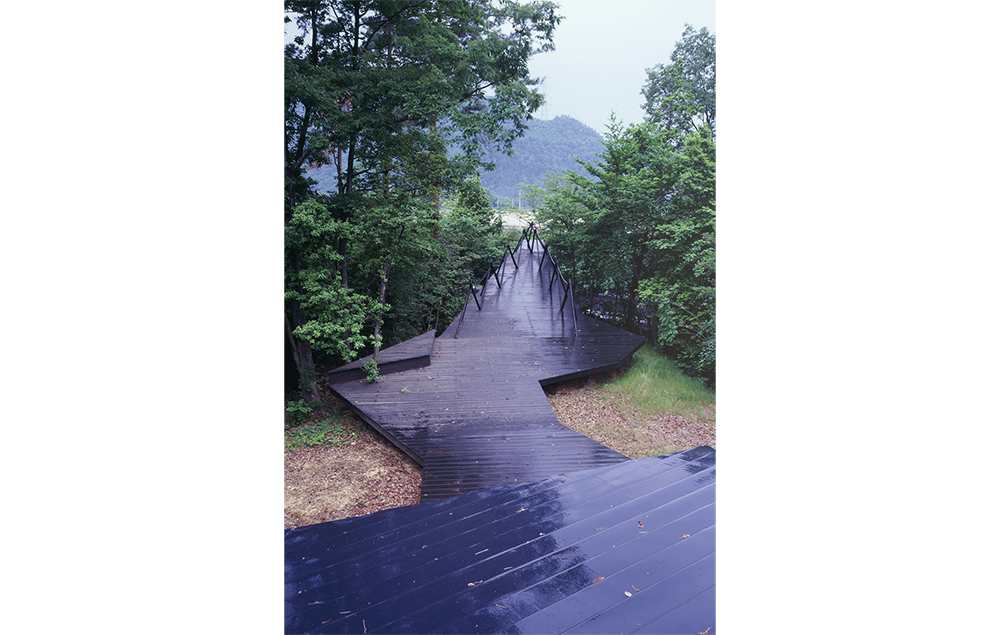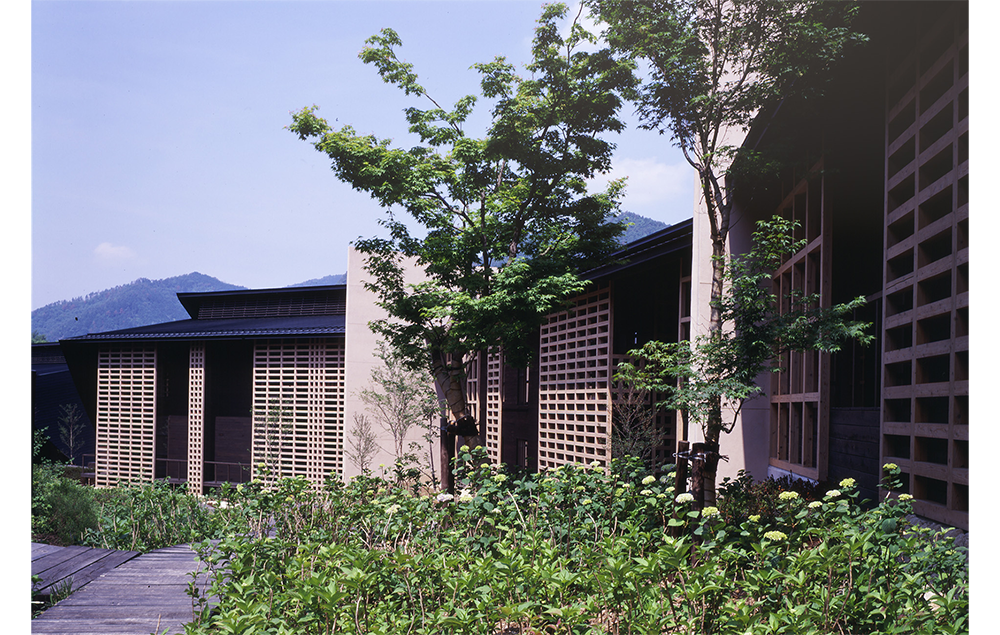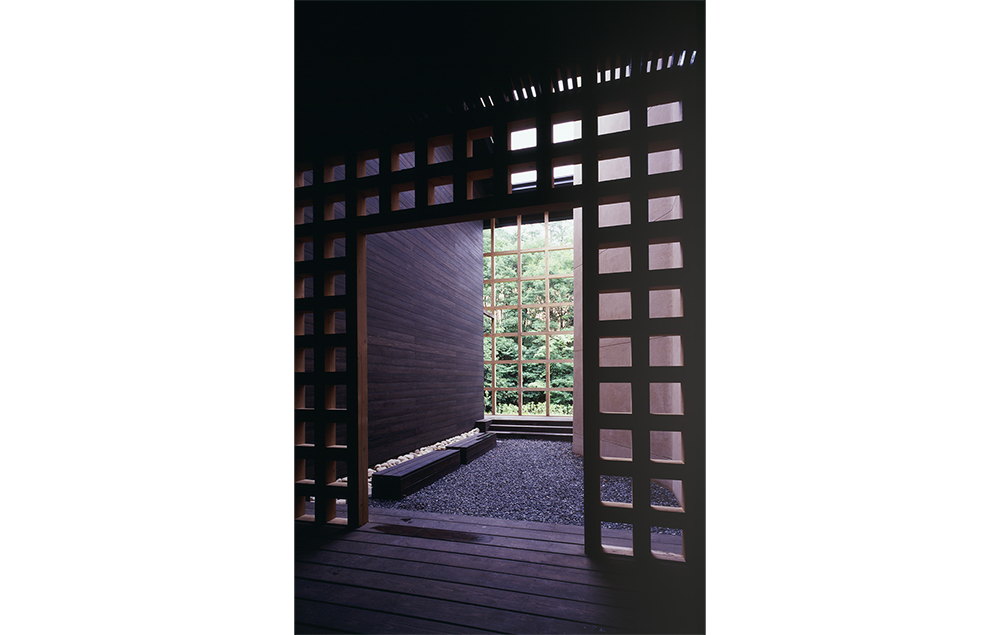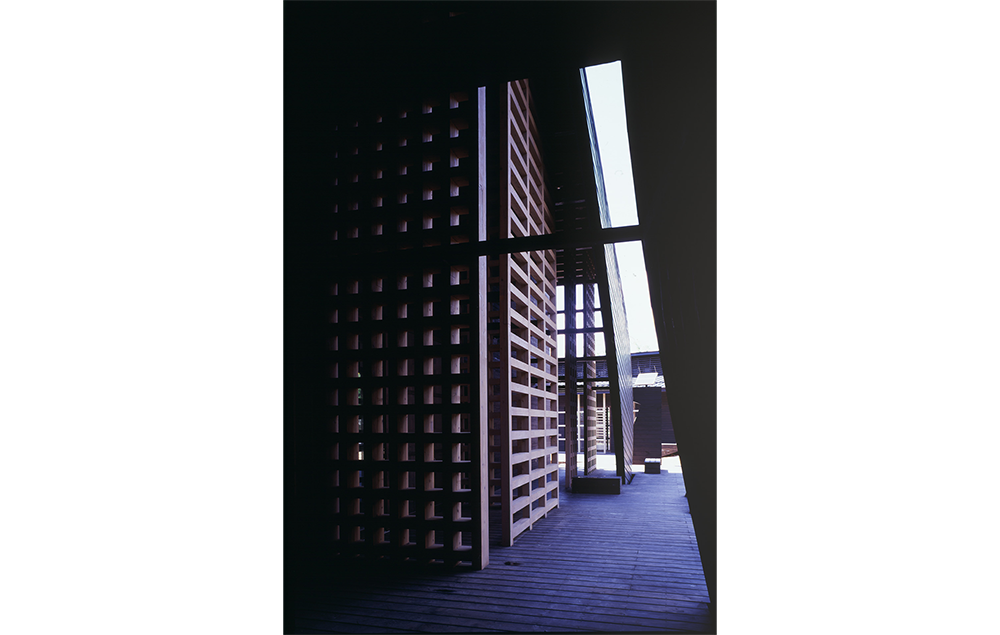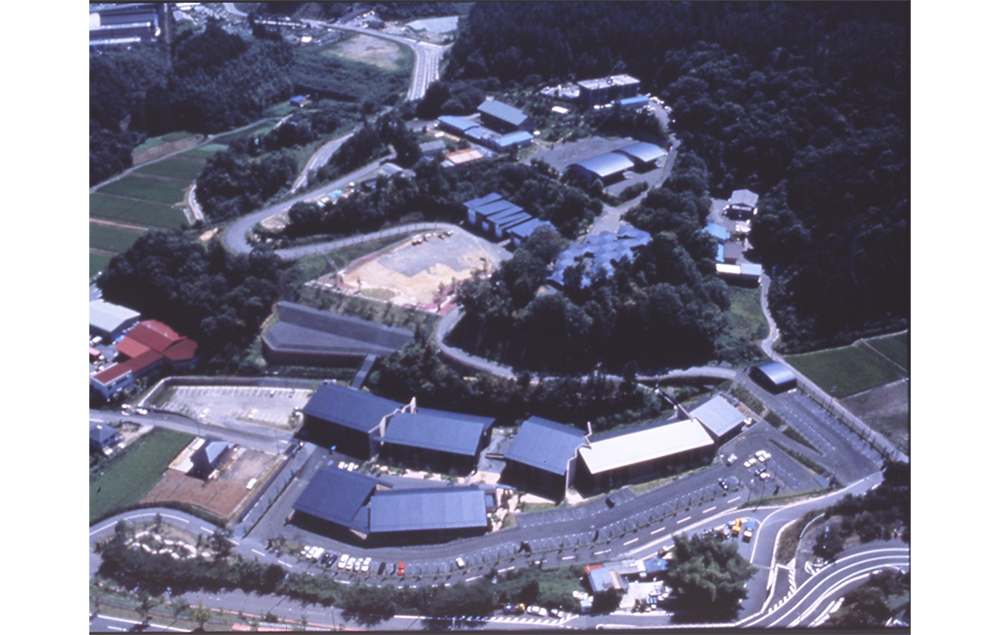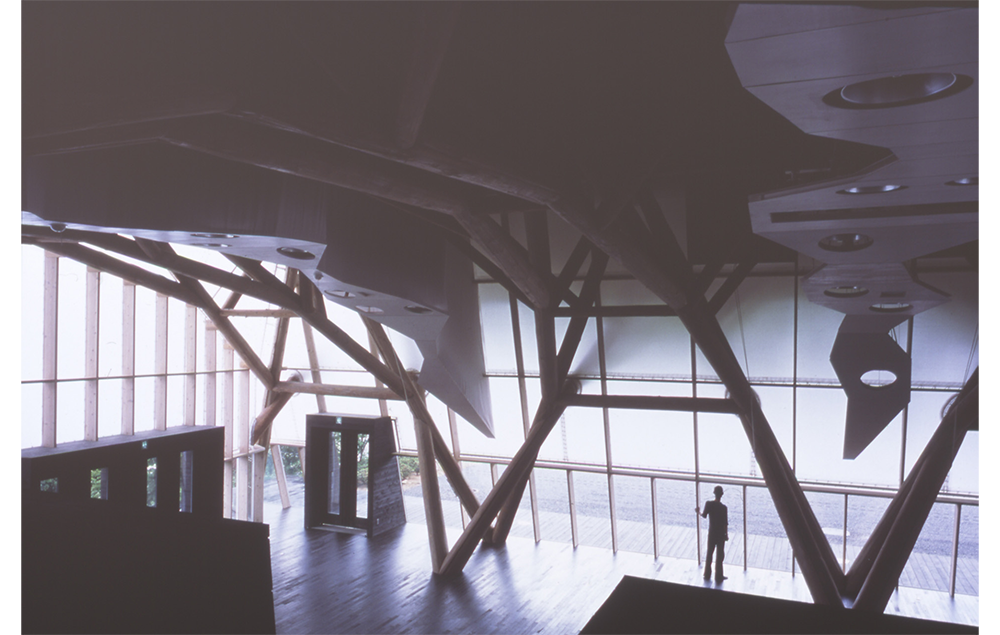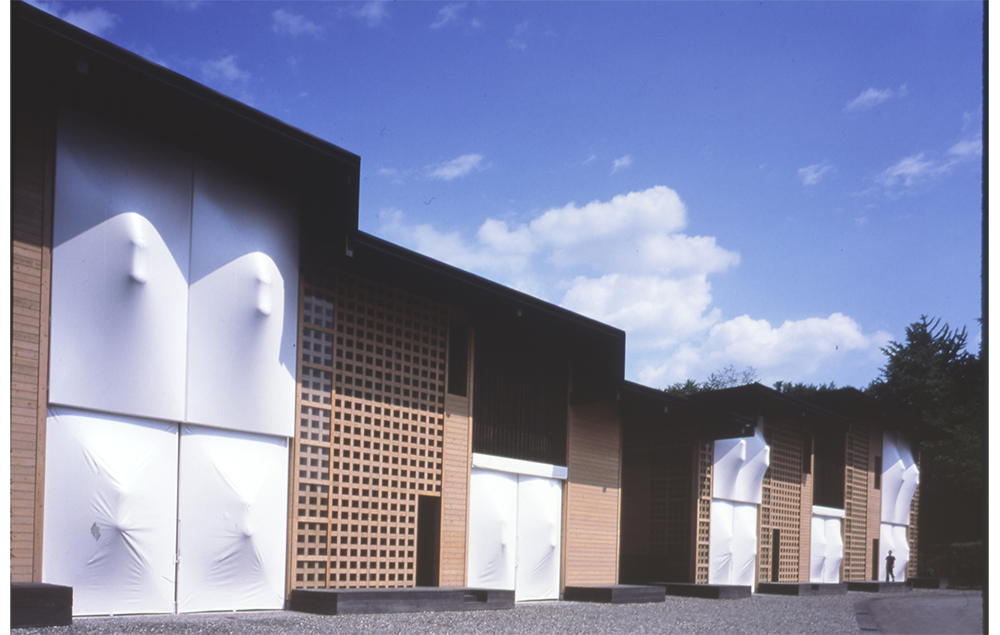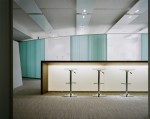岐阜県森林文化アカデミー / Gifu Academy of Forest Science and Culture
2001年1月1日
岐阜県美濃地方の豊かな里山の地形に調和するように各々の施設を配置し、全体が森の中にしずむような佇まいを見せています。施設群はフォレストウォークと呼ばれる森の小迪で繋がっています。コンクリートの護岸で固められていた敷地の中を流れるせせらぎは間伐材を活用して修景したところ、蛍がもどり昔ながらの里山の風情が甦りました。
豊かな自然に囲まれた美しい山の懐、「里山」を敷地にもつ岐阜県立森林文化アカデミーは、「森林と人との共生」を基本理念として建設された 森林を研究し森林文化の振興を担う人材を育成する実践的な教育・学習機関です。この施設は、日本古来の木造建築に見られる、釘や金物に頼らず 木と木を組んでいく接合技術を構造解析し現代建築に初めて応用することに成功した画期的な大型木造建築群です。日本的な自然観において、 自然はリダンダンシーが豊かで、機械論ではなく生物論的、非線形的に捉えられています。日本の文化はその自然の本性を見抜き、創作や思考に 取り入れてきました。森の圧倒的な存在感や夜の森の「闇」は時に畏敬の念を抱かせますが、同時に一本の樹の肌や枝葉、果実は脆く繊細です。 その樹でつくられている木造建築も森のように空間が生きています。手のひらにのる小さな木片にも森と森の「闇」が内在しているのです。 森の持つ闇は、例えば谷崎潤一郎の「陰翳礼讃」に記される、美しく優れて生産的な豊穣の闇といえるでしょう。
86,000本の間伐材を使う
「岐阜県立森林文化アカデミー」の建設に使われた間伐材は建築3,000㎥、外構で800㎥を超えています。すべて岐阜県産です。本数にして86,000本、 約150haの人工林の間伐を行ったことになります。かなりの量ですが、岐阜県が緊急に間伐を必要としているという森林面積103,000haの0.15%にも 満たないのです。同県の森林面積86万haのうち人工林は37万haで、県では年間8,000haの間伐を目標としています。日本全体でみると国土の65%、 2,500万haが森林で、そのうち1,000万haが人工林、そしてその60%、600万haが間伐期を迎えているといわれています。間伐を施さなければ森林は荒れ 良質の木材の産出ができなくなるだけではなく災害の原因にもなります。そして一番の問題は荒廃し痩せた森林は大気中のCO2の吸収能力が激減 することです。もちろん間伐をしてもその間伐材を燃やして処置すればせっかく木として固定されたCO2を大気中に放出してしまいます。そこで 間伐材の活用が叫ばれているわけです。できる限り多量の間伐材を使う、それがこのブロジェクトの重要な課題でした。
Each facility is distributed in accordance with the rich topography of the mountainous village of Mino region at Gifu and to merge into the forest. They are linked together by a series of paths, Forest Walk. We used the thinning wood to restore the scenery of the stream flowing within the concrete banks. As a result, the old landscape would revive and fireflies came back to this region.
The site is located at the foot of a beautiful mountain-scape, which used to be a typical “Satoyama” (inhabited hill) area. The Academy of Forest Science and Culture is designed upon the concept of the “Co-Existence of Man and the Forest” and this is a practical educational facility for training and teaching specialists of forest science and culture. The structure of the architecture is based on an advanced analysis and fabrication of wood, without using metal joint pieces and hardware connections, which comes from the tradition of Japanese wooden architecture. This is the inventive large wooden complex which exemplifies the first success of combination between high-tech contemporary architecture and wooden structure. In the Japanese way of thinking, nature is full of redundancy, and regarded to be non-linear and biosophical. The space of a forest is marked by its “potentiality”, which is within the darkness created by the shades and shadows of trees and plants, et al. Skins, branches, leaves and fruits of a tree are fragile and delicate. At the same time, space of wooden house is given a life like a tree. It is because even a piece of tiny wood preserves a forest and its “darkness” within it. Darkness experienced within the forest is related to the darkness referred to by Junichiroh Tanizaki in his essay “in Praise of Shadows”, which is regarded to be the source of fertile imaginations.
The use of 86,000 thinning woods
We used thinning woods to construct more than 3,000m3 volume and 800m3 exterior of Gifu Academy of Forest Science and Culture. All thinning woods were produced at Gifu. As much as 86,000 trees were thinning out, in other word, about 150 hectares of thinning was executed. Despite the amount, though, it is just less than 0.15% of 103,000 hectares of forests to which thinning is urgently required. Gifu prefecture possesses 860,000 hectares of forest in total, inwhich 370,000 hectare area is man-made and the administration plans to thin 8,000 hectares. In the whole country, 65% of the land, 25 million hectares, is occupied by trees and 10 million hectare area is man-made forest, of which 6 million hectare forest requires to be thinned. The lack of thinning causes not only the devastation of forest and the decrease of fine wood but also the natural disasters. Above all, devastated, sterile forest decreases sharply its assimilation capacity of CO2. Even we try to thin forest, thinning woods can emit CO2 in the air when burnt. In that sense, it is fundamental that thinning woods need to be reused. The challenge of this project was, therefore, to reuse thinning woods as many as possible.
基本データ
- 発注者
- 岐阜県
- 施工者
- 澤崎建設+栗山組(建築工事)、他27社
- 敷地面積
- 約 8 ha (演習林を含めると約 40ha)
- 延床面積
- 7,709m²
- 構造
- W
- 用途
- 教育・文化・研究施設
- 場所
- 岐阜県美濃市曽代88
- 完成年月
- 2001
- 受賞暦
- 公共建築賞特別賞/ イタリアIA賞1位 2006/ アルカシア建築賞ゴールドメダル 2003/ 松井源吾賞/ エコビルド賞/ 日本建築業協会BCS賞 2002/ 日本建築学会賞技術賞2002/ カナダグリーンデザイン賞 2001/ 中部建築賞/ 岐阜県森林科学文化アカデミー 設計プロポーザル最優秀賞 1998
DATA
- Client
- Gifu prefecture
- Constractor
- Sawazaki construction + Kuriyama-gumi, 27 others
- Site area
- about 8 ha
- Total floor area
- 7,709m²
- Structure
- W
- Main use
- educational, cultural, research institutions
- Location
- Mino-city,Yamanashi pref.
- Completion Date
- 2001
- Award
- Public Architecture Award 2006/ First Prize, Innovative Architecture International Award, Italy/ ARCASIA Award Gold Medal/ Gengo Matsui Award 2002/ Eco-Build Award 2002/ Building Contractors Society Award/ Architectural Institute of Japan Award/ Canada Green Design Award/ Central District Architectural Award 2001/ First Prize, Design Proposal for Gifu Academy of Forest Science and Culture
